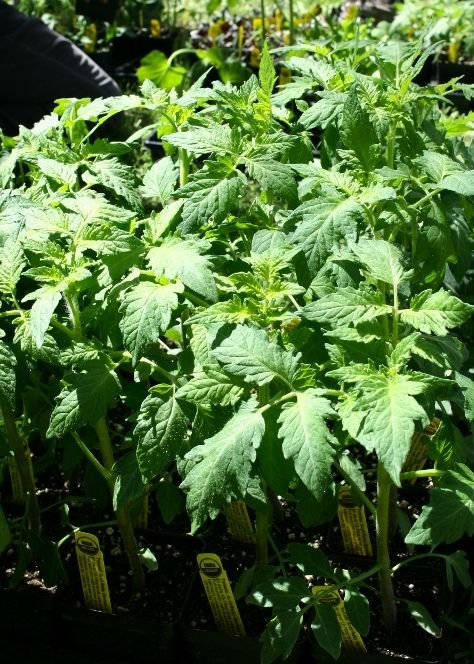As you anticipate the arrival of spring, remember that you can start many of your favorite warm-weather seeds now. Starting seeds indoors extends the growing season by up to two months by allowing plants that need warm soil and weather, such as tomatoes, peppers, and basil, to safely mature into seedlings that will be ready to transplant as soon as the last frost is over (early March in Central Texas). Growing from seed does not require much time or materials, and it is a fantastic way to prep your garden for your favorite summer crops from the warmth of your home. If you have kids, this a great lesson to show the important steps of a plant’s life cycle.
Starting seeds requires shallow containers such as plastic flats, peat or paper pots, or even egg carton bottoms. For transplanting seedlings, find clay or peat pots with a two and a half to four inch diameter. For materials, you’ll need seed starting mix and/or potting mix, warm-weather vegetable and herb seeds, and compost. You’ll also want to have a South-facing window that provides at least six hours of sunlight. You can also use lighting systems or grow lights and heating pads, but these are not essential or ideal for all budgets. To keep the seed mix moist, you’ll need plastic bags or plastic wrap for covering, as well as a mister or spray bottle for watering. It’s also helpful to have plant labels, since tiny seedlings can be difficult to identify.
When you have your materials ready, wet the germinating mix in a container and let it drain so that it is sufficiently moist but not water logged. Next, fill the flats or pots with the mix, leaving approximately one inch from the top. Use the information on the back of the seed packet to find out if the seeds need light to germinate as well as days to germination. If the seeds require light, lightly press them into the surface of the soil but do not cover them.
If they require darkness, use your pinky finger to make shallow indentations or holes, then sow approximately three to four seeds in each hole, cover with approximately half an inch of the mix and press down. Use your spray bottle to mist the surface of the flat or pot. Cover your containers with plastic wrap or place the containers in plastic bags, closing them firmly to prevent the mix from drying out while the seeds germinate. Place the containers in a warm, bright location next to a sunny South-facing window that gets at least six hours of sunlight per day.
Typically, the seeds will need 70-75 degrees F to germinate. Check the containers and spritz if necessary with your spray bottle. You can also keep the mix moist by watering from the bottom, setting the container in a few inches of water in your sink or a tray until the surface of the mix is moist. When seedlings emerge, remove the plastic covering. Germination time will vary from plant to plant, but most seeds will typically sprout in one to two weeks.
When seedlings have grown at least two sets of true leaves (as opposed to the first leaves, called the cotyledons), it’s time to transplant them into pots. Moisten your transplanting mix and let it drain. Fill your small pots approximately three-quarters full. Carefully use your finger or a pencil to remove the seedling from the flat, being mindful not to break the stem. Set the transplants in the pot, add mix around and over the roots, and gently press down. Place your pots near a sunny, bright window. Be sure to water regularly from the bottom until seedlings are three to four inches tall, after which it is fine to water from the top. At this time, you can introduce compost into the soil and more fertilizer such as fish emulsion, which should be diluted with water and added to the soil when you water.
In anticipation of transplanting when all danger of a frost has passed, you will need to “harden off” the seedlings, which is the process of moving plants outdoors for part of the day to gradually introduce them to direct sunlight, dry air, and cold nights. Start with two to three hours of sun a day in a sheltered location, gradually including exposure to cold weather (no colder than 40 degrees F). Some plants, such as tomatoes, may need to be transplanted one more time into larger pots as their expansive root systems develop. However, the majority of plants will not need to be moved again. By starting seeds indoors, you’ll be one step closer to having your spring garden ready to go.

